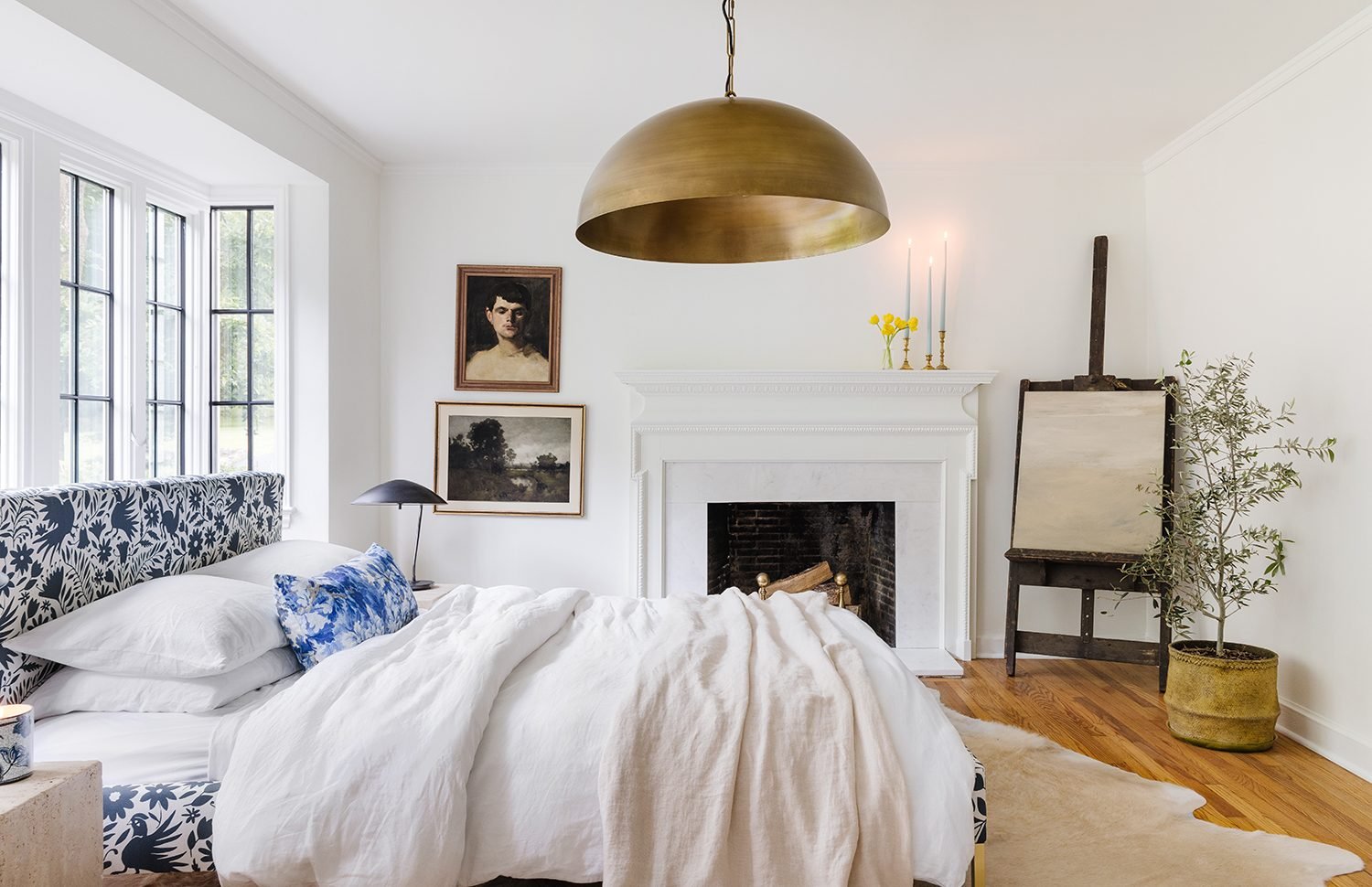The internet likes to tell us that there’s a plethora of things that can increase your overall sense of wellbeing and happiness inside of your home. These tips range from crystals — rose quartz, citrine, and amethyst are common ones — to essential oils to houseplants.
And while these may or may not improve the atmosphere of your home, there’s one tip that is statistically proven to promote calm, comfort, and tranquility. That one thing is good lighting. Natural and low-temperature, “warm” artificial lighting, to be exact. Picture cool-toned overhead office lighting compared to natural sunlight or warm, ambient lighting from a lamp post-sundown – that’s the difference we’re talking about.
We’d argue that playing up natural light during the day and skipping overhead at night in favor of wall sconces, floor lamps, or even candlelight is a foolproof way to improve your home’s ambiance (especially throughout the dreary winter months). Our designers even swear by specific bulb types and wattage to get the atmosphere just right.
Ahead, find 11 pro tips for setting the mood at home, plus inspo images that will serve as a guiding light —see what we did there? — to your own home design.
1. Flank a Sofa
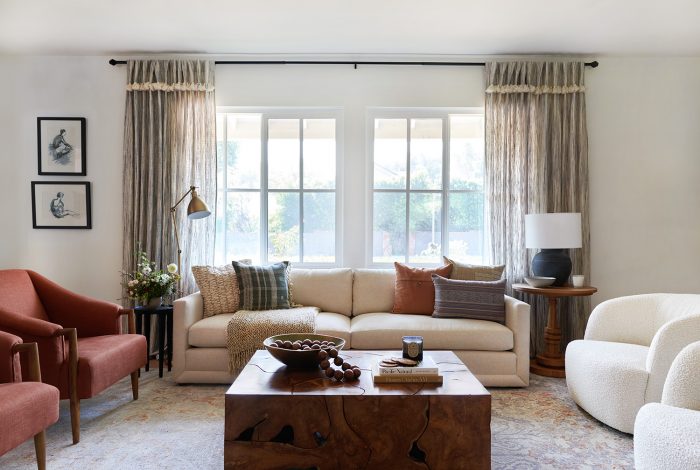
In a living room, a quick and easy way to introduce multiple light sources is to flank your sofa on both sides with some sort of light source. It can be a table lamp on a side table, a floor lamp, an arched floor lamp covering a section of the sofa from above, or a swing-arm wall sconce that you can move closer to and away from the sofa as your needs fluctuate.
2. Install Picture Lights
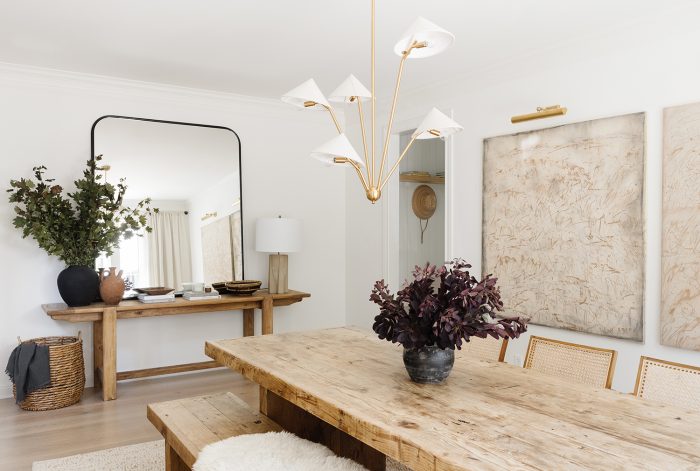
Long, narrow picture lights above wall art is a chic and sophisticated design statement no matter how you slice it. They illuminate artwork in such an elegant way and provide indirect mood lighting that warms up a space. Obviously hardwired is ideal, but we’ve seen many plug-in situations that accomplish the look with a drastically more conservative budget.
3. Bulbs Matter

You can have multiple light sources in a room, but if you’re using the wrong kind of bulbs, the purpose is moot. Incandescent refers to the traditional filament-style bulbs everyone recognizes–also known as Edison bulbs. Incandescent bulbs come in a variety of shapes and wattages and are likely what everyone had in their homes growing up. While they’re being phased out in favor of longer lasting, more energy efficient and sustainable lightbulb options, these classic bulbs cast a warm, soft glow that’s inimitable. They look beautiful in fixtures with clear globes where you can see the bulb inside.
4. Make Use of Candlelight

Sure, it isn’t a powerful light source in terms of wattage, but it can outperform all other options when it comes to providing ambiance. For candles that will actually pump out light, group several together in a non-functioning fireplace or utilize taper candles in a trio of holders. We love using candles in an office, like the photo above, to create a space that feels tranquil and conducive to a high-performing workday.
5. Know Your Wattage
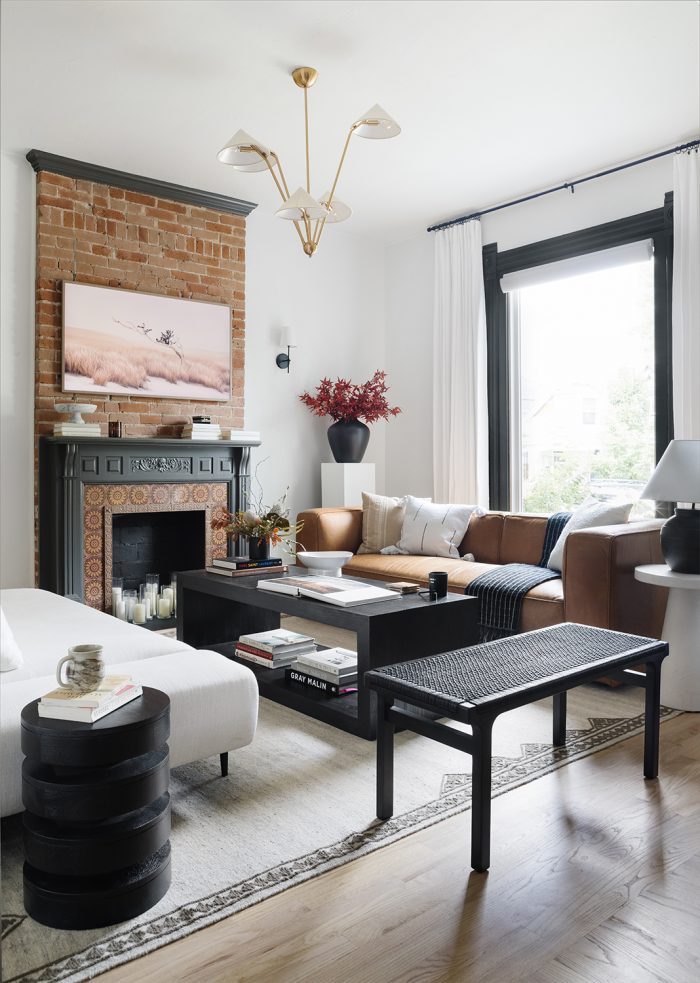
When buying lightbulbs, it’s important to understand the temperature and wattage that you’re going for. Lightbulb temperature refers to how warm or cool the light is (measured in Kelvins), and wattage refers to how bright a bulb is, or how many lumens it produces. Traditional or incandescent bulbs give off a warm glow around 2700K, as discussed above. Twenty to 40-watt bulbs are less bright and are great for floor and table lamps, whereas 75- to 100-watt bulbs are very bright and good for outdoor lighting or ceiling cans. For a cozy, relaxing glow, opt for warm 2700K, low-watt bulbs!
6. Light a Fire

If you’re lucky enough to have a fireplace in your home, the warm, flickering light it exhales is a fantastic way to introduce a unique light source to a room. If it’s the summer, you can always build a small fire that works more for ambient lighting then it does a heat source.
7. Hang Sheer Drapes
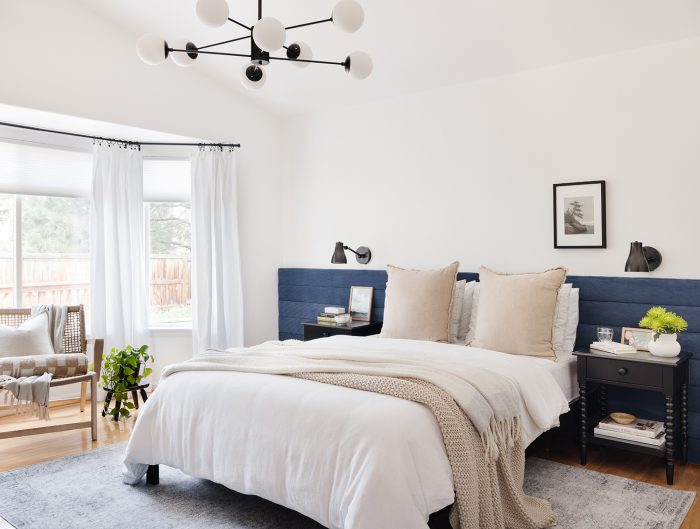
If you have a natural light source in a room but a lack of privacy, employ sheer drapes or roller shades. The see-through aspect of the sheers allow plenty of natural light to filter through while also providing a buffer between you and the outside world.
8. Pay Attention to Spacing
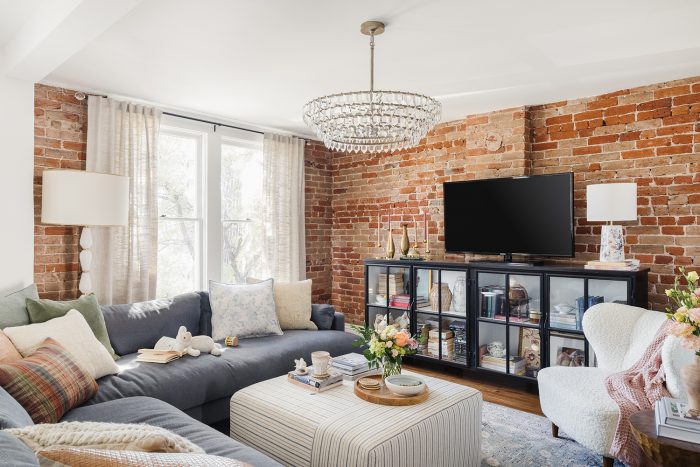
It’s important to scatter light sources throughout each room in your home. For instance, in the photo above, there’s an overhead fixture casting light throughout the entirety of the room, as well as a floor lamp behind the sofa and a table lamp on the opposite end. This placement not only allows ensures there will be no overexposed areas, it allows for lighting flexibility as the day progresses.
9. Maximize Natural Light
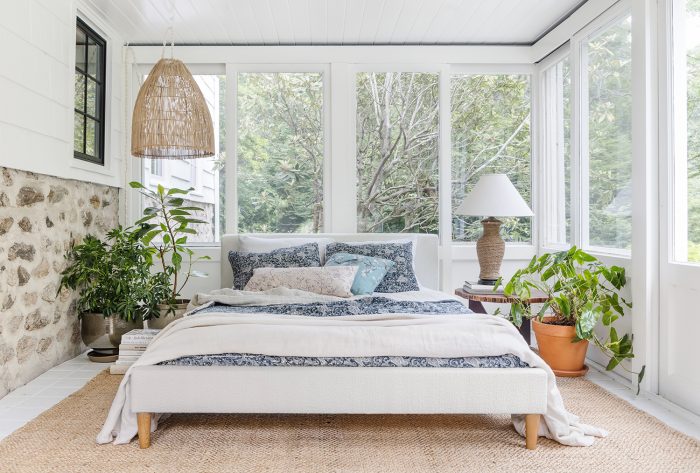
Hands down the best light source you can have is from the sun itself. If you have it, make the most of it with tall windows, bright paint, and minimalist window treatments. Nature and sunlight have a drastic impact on overall mental health and wellbeing, so double down on the benefits with houseplants and fresh greenery.
10. Utilize Mirrors
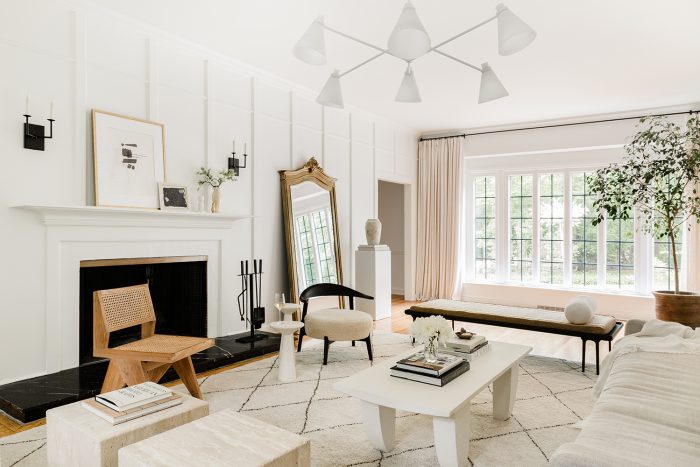
Placing mirrors in a room can reflect natural light streaming in from windows and create the illusion of a larger space. Try leaning a full-length mirror against a living room wall, like the above photo, or hang a small mirror above your sofa, fireplace, or console table. Paired with clean white paint (see our favorite hue here), the overall effect is light, bright, and airy.
11. Install Dimmers
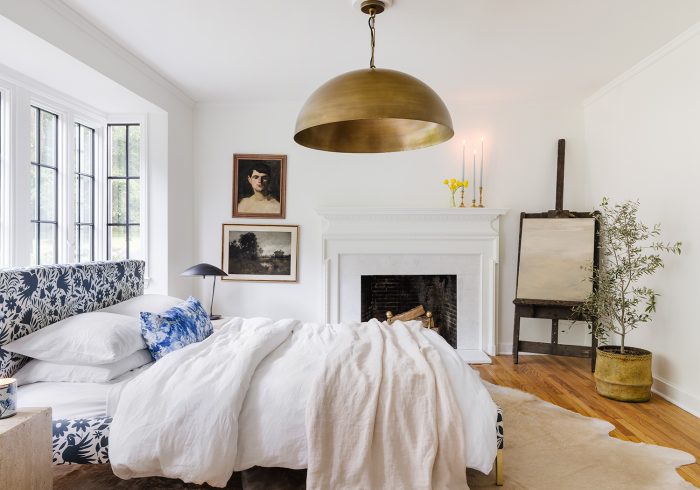
If you have a large overhead light fixture like the bedroom above, think about installing a dimmer mechanism. It’s an easy, affordable upgrade that will make your primary light fixtures that much more efficient and functional. Coupled with moody tapers and secondary light sources, a dimmer switch can really add to the ambiance.
Want expert advice on your actual home, straight from an interior designer? Start with our style quiz to work with a design pro one-on-one.

